Pyrrole-2-carboxylic acid
- CAS NO.:634-97-9
- Empirical Formula: C5H5NO2
- Molecular Weight: 111.1
- MDL number: MFCD00005219
- EINECS: 211-221-9
- SAFETY DATA SHEET (SDS)
- Update Date: 2024-11-20 11:41:24
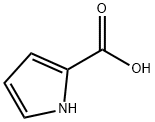
What is Pyrrole-2-carboxylic acid?
Chemical properties
Light brown powder
The Uses of Pyrrole-2-carboxylic acid
Pyrrole-2-carboxylic acid is small amphoteric polar metabolite produced by many Streptomyces species, often co-produced with its dimer, pyrocoll. Pyrrole-2-carboxylic acid is an important dereplication standard in discovery, displaying a distinctive UV spectrum and a broad range of biological activities, albeit weak. More recently, pyrrole-2-carboxylic has demonstrated antiparasitic activity against Trypanosomes by selective proline racemase inhibition and has potent antifungal activity against Phytophthora.
The Uses of Pyrrole-2-carboxylic acid
Pyrrole-2-carboxylic Acid is a reagent used in the synthesis of potent small molecule inhibitors of severe acute respiratory syndrome (SARS) coronavirus. Also used in the synthesis of [2,3-c]pyridine-7-one scaffolds.
What are the applications of Application
Pyrrole-2-carboxylic acid, Streptomyces sp. is a metabolite produced by Streptomyces species that has antifungal properties
Definition
ChEBI: A pyrrolecarboxylic acid that is 1H-pyrrole carrying a carboxy substituent at position 2.
Properties of Pyrrole-2-carboxylic acid
| Melting point: | 204-208 °C (dec.) (lit.) |
| Boiling point: | 340.3±15.0 °C(Predicted) |
| Density | 0.862 |
| refractive index | 1.441-1.445 |
| storage temp. | Keep in dark place,Sealed in dry,Room Temperature |
| solubility | Soluble in methanol. |
| form | Powder |
| pka | 4.45(at 20℃) |
| color | White to off-white to pale pink |
| BRN | 80825 |
| CAS DataBase Reference | 634-97-9(CAS DataBase Reference) |
| NIST Chemistry Reference | Pyrrole-2-carboxylic acid(634-97-9) |
Safety information for Pyrrole-2-carboxylic acid
| Signal word | Warning |
| Pictogram(s) |
 Exclamation Mark Irritant GHS07 |
| GHS Hazard Statements |
H315:Skin corrosion/irritation H319:Serious eye damage/eye irritation H335:Specific target organ toxicity, single exposure;Respiratory tract irritation |
| Precautionary Statement Codes |
P261:Avoid breathing dust/fume/gas/mist/vapours/spray. P264:Wash hands thoroughly after handling. P264:Wash skin thouroughly after handling. P271:Use only outdoors or in a well-ventilated area. P280:Wear protective gloves/protective clothing/eye protection/face protection. P302+P352:IF ON SKIN: wash with plenty of soap and water. P305+P351+P338:IF IN EYES: Rinse cautiously with water for several minutes. Remove contact lenses, if present and easy to do. Continuerinsing. |
Computed Descriptors for Pyrrole-2-carboxylic acid
Pyrrole-2-carboxylic acid manufacturer
JSK Chemicals
Dr. Silviu Pharmachem Pvt., Ltd.
ALS INDIA LIFE SCIENCES
Denisco Chemicals Pvt Ltd
New Products
(S)-3-Aminobutanenitrile hydrochloride 4-Methylphenylacetic acid N-Boc-D-alaninol N-BOC-D/L-ALANINOL Tert-butyl bis(2-chloroethyl)carbamate 3-Morpholino-1-(4-nitrophenyl)-5,6-dihydropyridin- 2(1H)-one Furan-2,5-Dicarboxylic Acid Tropic acid 1-Bromo-3,5-Di-Tert-Butylbenzene S-2-CHLORO PROPIONIC ACID ETHYL ISOCYANOACETATE 2-Bromo-1,3-Bis(Dimethylamino)Trimethinium Hexafluorophosphate 4-IODO BENZOIC ACID 3-NITRO-2-METHYL ANILINE 1-(2,4-DICHLOROPHENYL) ETHANAMINE (2-Hydroxyphenyl)acetonitrile 4-Bromopyrazole 2-(Cyanocyclohexyl)acetic acid 4-methoxy-3,5-dinitropyridine 1-(4-(aminomethyl)benzyl)urea hydrochloride 2-aminopropyl benzoate hydrochloride diethyl 2-(2-((tertbutoxycarbonyl)amino) ethyl)malonate tert-butyl 4- (ureidomethyl)benzylcarbamate Ethyl-2-chloro((4-methoxyphenyl)hydrazono)acetateRelated products of tetrahydrofuran
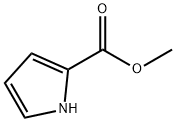
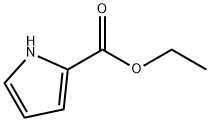

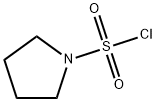



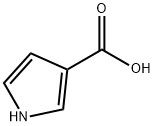
You may like
-
 Pyrrole-2-carboxylic acid, 99% 634-97-9 99%View Details
Pyrrole-2-carboxylic acid, 99% 634-97-9 99%View Details
634-97-9 -
 1H-Pyrrole-2-carboxylic acid 98%View Details
1H-Pyrrole-2-carboxylic acid 98%View Details
634-97-9 -
 Pyrrole-2-carboxylic acid 98% (HPLC) CAS 634-97-9View Details
Pyrrole-2-carboxylic acid 98% (HPLC) CAS 634-97-9View Details
634-97-9 -
 Pyrrole-2-carboxylic acid 97% CAS 634-97-9View Details
Pyrrole-2-carboxylic acid 97% CAS 634-97-9View Details
634-97-9 -
 Pyrrole-2-carboxylic acid CAS 634-97-9View Details
Pyrrole-2-carboxylic acid CAS 634-97-9View Details
634-97-9 -
 Pyrrole-2-carboxylic acid, 97% CAS 634-97-9View Details
Pyrrole-2-carboxylic acid, 97% CAS 634-97-9View Details
634-97-9 -
 Pyrrole-2-carboxylic Acid CAS 634-97-9View Details
Pyrrole-2-carboxylic Acid CAS 634-97-9View Details
634-97-9 -
 Pyrrole-2-carboxylic acid CAS 634-97-9View Details
Pyrrole-2-carboxylic acid CAS 634-97-9View Details
634-97-9